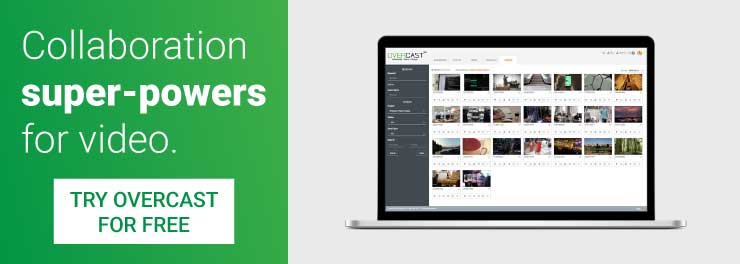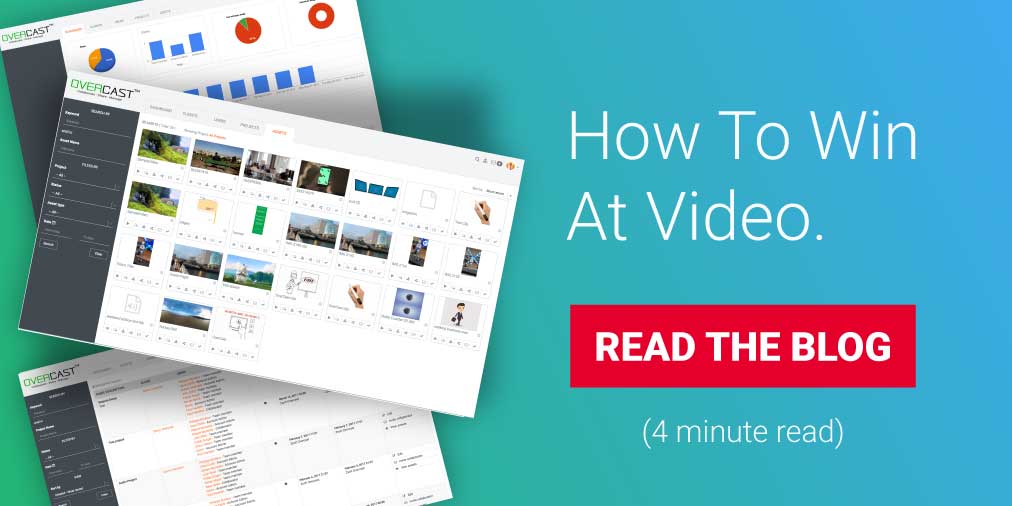How To Win At Video
Video used to be easy
Men on Madison Avenue and Fleet Street used to say that TV was the easiest business going – just leave a bucket outside the door at night and it would be full of cash in the morning. Sweet.
And it was probably true. Once the advertisers and the TV stations had reached their agreements on the delivery of audience and audience profile, there was very little more to do. The industry was highly regulated so there were only ever a fixed number of players, the metrics were agreed for decades and a channel only ever had 24 hours to fill.
Video has changed all that. Now every business with a marketing or HR department wants to create video. And why not? It’s the most powerful medium there is for creating impactful messaging, for delivering those messages, and for communicating with an audience.
Thing is – it can be expensive and complicated if you don’t know what you are doing. Although everyone theoretically can make a video with their smart phone – very few of us can actually edit two clips together or create a story using the visual language of TV.

More fail than succeed
“So how are so many people succeeding with video on Youtube and Facebook?” you might ask. It’s a valid question. But perhaps a better question is: “How many people and businesses are failing with video on those mediums?” Why – because we don’t hear about them and the reality is that the numbers are significant.
Video is not easy. New entrants need to understand that when you understand the language of video, it’s important to invest a modest sum of money and time to learn how to scale your production. Similarly to when TV was controlled by a few networks, it is important to constantly be creating new content and that brings with it some significant challenges.
The one thing I like to tell businesses who have committed to putting video at the heart of their communication platform – be it for internal training and safety, or external advertising and promotion – it doesn’t get easier but you will get better at it.
No one really wants to hear this. Surely it has to get easier. The reality is though when it comes to creating content, it gets more and more complicated figuring out how to distribute it and what platforms to distribute it on. Then there is the management of the processing. Formats change almost daily. Advertisers want to access more 360 video and virtual reality formats, while industry wants to deliver in super HD or 4K. It all means that you need to have access to the latest tools.
It used to be that accessing the latest tools meant buying transcoders and expensive pieces of hardware that were powerful enough to process the content and then large enough to store it. That all really changed when Youtube solved the challenge that consumers had which, put simply, was to share and watch videos they were creating.
But business has different needs. More needs. Privacy, security, ownership and copyright are just a few. While sharing and watching are still at the heart of what they want to do, they also need to do it privately, with security and follow some of the creative processes that were used for television like collaboration and approval processes. When creating video for online – the old practices of doing this in a meeting room or edit suite are still being practised today, but business owners are learning this is expensive and unnecessary.
So learning how to manage video for business sounds painful. Sounds like a lot of training on complicated technical platforms that, frankly, none of us has time for. But it doesn’t have to be.

The first thing to realise is that there is a massive difference between learning and training. Learning can be done without having a facilitator. It is simpler. It happens when the technology no longer creates an impediment to achieving you goals and you can get on with what you wanted to do.
We did a survey of our clients a few months back to ask if they knew how to transcode 4k video into a format that could easily be uploaded to Instagram and what exactly that format was. It was no wonder that almost none of our clients knew how to do it themselves, but that they knew someone in a posthouse somewhere that was sure to help. When we showed them a 20-second video of how it could be done, they were amazed at the simplicity. It was one of those penny dropping moments when they understood they could now finally control their own destiny.
At Overcast, we like to say that it only takes 30 minutes of learning to change a lifetime of how you manage your video. From processing, to storage, to search and distribution on multiple platforms, we like to think that working with video is now as easy as working with word documents.
As I mentioned, one of the challenges with video is that it is changing almost daily. Different formats, new social platforms to publish to, and new analytics for each platform mean it is difficult to know what kind of impact you are making with your video content. One of our prospective clients told me that they are now creating 32 different versions of every video they create simply so they can target different audiences in different places. And the worst part is, the only technical person on the team – the editor – is charged with making all the different formats. That means he is no longer looking after the thing he is really good at – making more quality content. It’s a perfect example of technology getting in the way rather than helping the process.
So while Google, Facebook, Youtube, Twitter, Apple, Snapchat and a number of other platforms each requires unique versions of your video, you can be justified in feeling that it is just getting more difficult. So how do you cope? How do you overcome the fragmenting technology market?
Digital Asset Management for Video
The answer is that the secret sauce lies in digital asset management. A platform like Overcast has been developed with the business and creator in mind. Our customers come first and we know they do not have the technical know-how to perform the technical tasks required. We know that you need to turn a profit and that video is there to help with that process. And we also know that not having experience as an editor should not preclude you from handling simple technical tasks. These should be performed unattended in the background.
For instance, how many businesses are still storing video on disks and desktops? It’s simply not practical to put videos on your computer using programmes like WeTransfer and Dropbox and think it won’t fill up. (By the way – we are big fans of WeTransfer and Dropbox – but they simply are not sophisticated video platforms.) And if you are storing videos on your desktop then it’s impossible for others to see them, or share them or collaborate on them which is the essence of the video creation process.
Ultimately what I mean by “getting better” is that it means being able to do more, manage more, hit those targets you want to achieve and ultimately make more money. Isn’t that the goal – to try to figure out what the secret sauce is that will help us make money at the digital game? Sure, we hear about others achieving amazing successes. And every business can do it. So for those of you who haven’t cracked it yet, don’t feel as if it’s out of your reach. You’re just a step behind and you need to empower your team with the right tools to put you on an equal footing. Chances are it is the technology (and not the people) that is getting in the way. And that investing a bit of time and money in the right learning and technology will enable your team to make things better. In the long run, it should help you to win.

